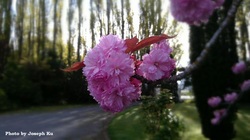Beaver Tree Service Winter Newsletter – August 2025
Winter tips, team updates and some useful information to keep you safe!
DIY: Simple Techniques for Caring for Your Trees at Home
Here are some essential DIY tree maintenance tips tailored to our conditions.
Creating a Wildlife-Friendly Garden with Native Trees
We encourage our clients to consider how their gardens can support wildlife, especially as urban development continues to reduce natural habitats.
Life Up a Tree in Wellington: Tales from the Capital’s Canopy
As an arborist working in Wellington, I can safely say no two days are the same. That includes the weather, the terrain, and the ways I’ve learned to creatively wedge a chipper into a tight driveway without annoying the entire neighbourhood.
How to Choose a Reputable Tree Surgeon in New Zealand
Tree work can be complex and dangerous. It requires specialist knowledge of tree biology, safe climbing techniques, and correct pruning methods.
Winter Frosts
While frosts plays an important role in many ecosystems, it can also be challenging for our garden trees and plants..
Tree Care Tips
We’ve compiled these articles so that you too, can benefit from the experience and knowledge that our arborists and skilled tree techs have. We are committed to our customers and desire that you enjoy and value your tree’s as much as we do.
Giving back to the community in various ways is yet another one of our key focuses.
 Spring is the perfect time to prune your ornamental trees, the sap has stopped rising, most trees are finishing flowering & leaves have developed. Trees are actively growing so any cuts are going to heal well. Trees are less prone to disease or infections due to the above reasons when pruned at this time of year. So for healthier trees & more sun during those evening BBQ’s & entertaining prune at the right time. If you need help or would prefer an expert arborist to do this for you please give us a CALL NOW on 344-6223 for your FREE Spring Tree Appraisal.
Spring is the perfect time to prune your ornamental trees, the sap has stopped rising, most trees are finishing flowering & leaves have developed. Trees are actively growing so any cuts are going to heal well. Trees are less prone to disease or infections due to the above reasons when pruned at this time of year. So for healthier trees & more sun during those evening BBQ’s & entertaining prune at the right time. If you need help or would prefer an expert arborist to do this for you please give us a CALL NOW on 344-6223 for your FREE Spring Tree Appraisal.